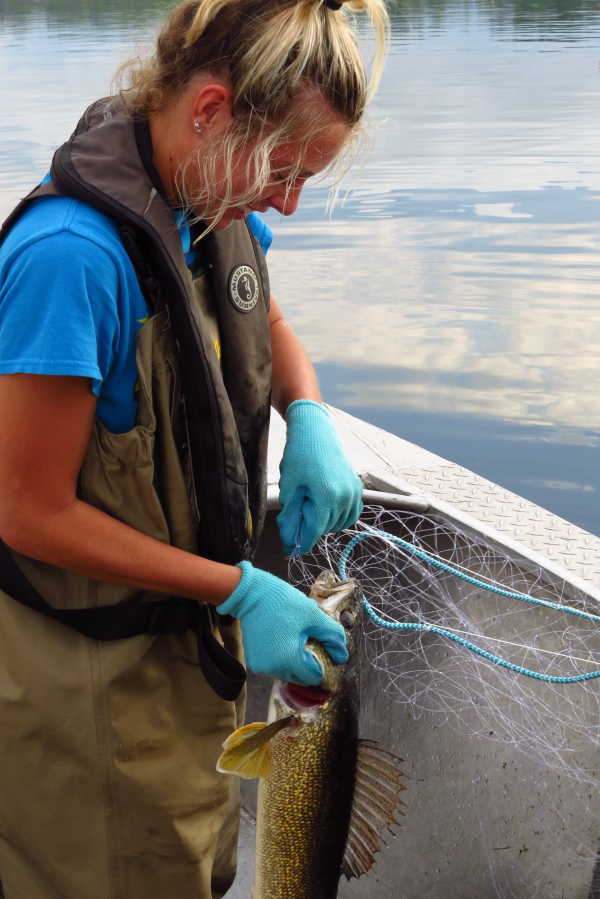

|
To intensively manage a fish population as Minnesota DNR does on Mille Lacs Lake, it is helpful to know how many fish there are in the lake.
Conducting a population estimate on a lake as large as Mille Lacs requires a large sample size, making it time consuming and expensive.
For those reasons, conducting annual population estimates are not practical. During years in which a population estimation is not done, a computer population model is used to estimate the population size. Periodic population estimates are used to tune the computer model so that modeled results are good representations of population size in years without direct population estimates.
During the spring and early summer of 2018, the Minnesota Department of Natural Resources, in cooperation with Minnesota Pollution Control Agency, Great Lakes Indian Fish and Wildlife Commission, the Fond du Lac Band of Lake Superior Chippewa and citizen volunteers, completed a walleye population estimate on Mille Lacs Lake. The study was conducted to estimate how many walleye longer than 14 inches there are in Mille Lacs Lake. Walleye longer than 14 inches are considered the most desirable size to anglers in Mille Lacs.
So how does a population estimate work? Walleye are tagged during the spring, when they are concentrated near spawning areas. After spawning, we recapture the tagged walleye. Based on the number of walleye that were tagged, the total number of walleye captured during the recapture phase, and the number of tagged walleye caught during the recapture phase, we can estimate the number of walleye in the lake.
In its simplest form, this method of estimating the number of animals in a population is called the Lincoln-Petersen method, which requires that sex ratios and size distributions between the tagging and recapture events to be similar. Because males are easier to catch during spawning and females are easier to catch after spawning, a modification of the Lincoln-Petersen method was used.
Using electrofishing gear at night, crews tagged just under 20,000 walleye from May 2 through May 10. Each walleye was tagged with two individually numbered yellow tags. Two tags were used so that tag loss could be evaluated, as unaccounted tag loss can affect the population estimate.
The recapture phase of the project started on May 20, and was finally completed on June 14. Gill nets were used to catch the walleye during the recapture phase. In order to minimize the number of walleye that died from being caught in the gill nets, the nets were set for less than one hour. This allowed us to release most of the sampled walleye unharmed. Crews worked two shifts, covering the day from 8 a.m. until approximately 1 a.m. the following morning. Throughout the five-week recapture period, 154 tagged walleye were recaptured and just over 6,500 untagged walleye were caught.
Based on these data, the best estimate is that there are 727,000 Walleye longer than 14 inches, including 400,000 females and 327,000 males, in Mille Lacs Lake.
Compared to other lakes, Mille Lacs Lake is unique because there have now been seven population estimates conducted since 2002. Through that period the population estimates have ranged from 1.1 million in 2002 to 249,000 in 2014.
If you catch a tagged walleye, please record the tag numbers (if you don't have pencil and paper handy, consider taking a picture of the tags), the length of the fish and where you caught the fish. You can then report the fish on the tagged fish reporting page. In return, you will receive information we collected at the time the fish was tagged and any other information submitted by anglers that reported the fish previously.
Contact Tom Heinrich (link sends email), Mille Lacs area fisheries supervisor, via email or phone at 320-692-0085, Ext. 225.